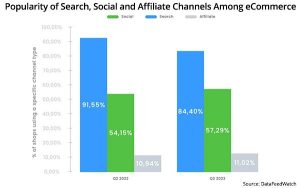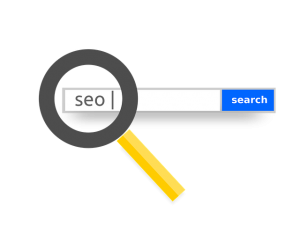
Optimizing your PPC campaigns is more than a ‘set it and forget it’ task. We all know the benefits of whitelisting sources and geotargeting your campaigns to reach specific people. But mobile usage is changing the game. In fact, mobile users will do everything desktop users do, provided it’s presented in a useable way.
Let’s take a closer look on how to more closely address the rise of mobile campaigns.
1. Target the Right Device When People Are On It
It’s projected that by 2020, the average person will use 4.3 internet connected devices on a regular basis. This leaves a huge opportunity for marketers to focus on hitting the right customers, at the right time, and on the right device.
Understanding which verticals people are looking for, and through what device, is invaluable data for marketers and media buyers.
First, look at your campaigns and figure out what devices your target audience is using, and when they’re using them. For example, maybe your target customers use desktops during the day, tablets at night, and smartphone usage increases on the weekends.
Why does this matter? According to Bing Ads, there’s a 15-20% variance in how users search on different devices. One blanket campaign for all devices isn’t the personalized search experience consumers now expect from advertisers.
2. Create Mobile-Friendly Ads
The second line of your ad copy may not show on Google mobile searches. It may be replaced with extensions if it’s not expected to perform well. Have you optimized your copy for that scenario?
While account managers simply need to be aware of the change, there are a few suggestions on how to leverage this change:
- Call out the most important point of your ad in line 1.
- Use mobile preferred ads.
- Increase your AdRank by maximizing your CPC bid, Quality Score, and using ad extensions.
With 63% of people expected to do more mobile shopping over the next couple of years, optimizing properly will help your clients grab a seat at the growing mobile search table.
3. A Mobile-Optimized Site Will Help Organic Search
In late 2014, Google announced it would give ‘priority’ to mobile-friendly sites in the SERPs. Warranted? Probably, seeing as though mobile is making up a large portion of searches. But what does that mean for PPC?
Speculation from a single line in Google’s announcement about mobile-friendly labels indicates that this may become a ranking signal. But this one goes beyond just PPC. While the copy in your campaign is important, so is the landing page.
Users won’t settle for a subpar experience on mobile. Finding what they need should be as easy as if they were on a desktop. Some tips include:
- Watch your page speed! No one likes to wait, especially a mobile user.
- The CTA should be easy to navigate with the touch of a finger.
- Don’t ask too much of a mobile user. Lengthy forms will take forever to tap their way through, so the user may just bounce.
4. Use Bid Modifiers
Both Bing and Google AdWords allow advertisers to adjust their bidding strategies between desktop and mobile campaigns. With Bing, you can also use bid modifiers across both tablets and smartphones. Tablets have a -20% to +100% bid modifier, while smartphones will have a -100% to 300%. With AdWords, mobile bid adjustments can be set between +300% and -90% of the base bid.
5. Understand Your Campaign Hierarchy
With every advanced feature you use, you run the risk of setting different bid modifiers to trigger on the same word. For instance, say you have a campaign bidding on the keyword “click fraud.” You set device targeting to ‘mobile,’ it’s dayparted to target weekdays from 4pm to 7pm, and you’re geotargeting California. You have bid modifiers in place for all 3 settings.
Each manual modification potentially sets you up for failure. Why? Consider the mobile user, searching click fraud in the Silicon Valley at 5pm on a Thursday. You just paid a pretty penny to target this customer. And it will be difficult to separate the data of this click and attribute its success to device, geographic, or time targeting, as they are unable to work independently of one another.
6. Study Your Conversion Rates
When you have multiple campaigns targeting mobile versus PC, keep an eye on the conversion rate. Conversions may be similar between devices, but they might vary widely.
Also keep track of where those conversations are taking place. Perhaps the northeast has widely adopted mobile searching for electronics, but the midwest leans more towards PC. Your bids should be closely related to the conversions on each device.
Conclusion
Setting and optimizing your device targeting strategy is important. Not only can it affect your conversion rate, but it can influence the user experience.
Take these tips and implement them with your PPC campaigns.
(339)









